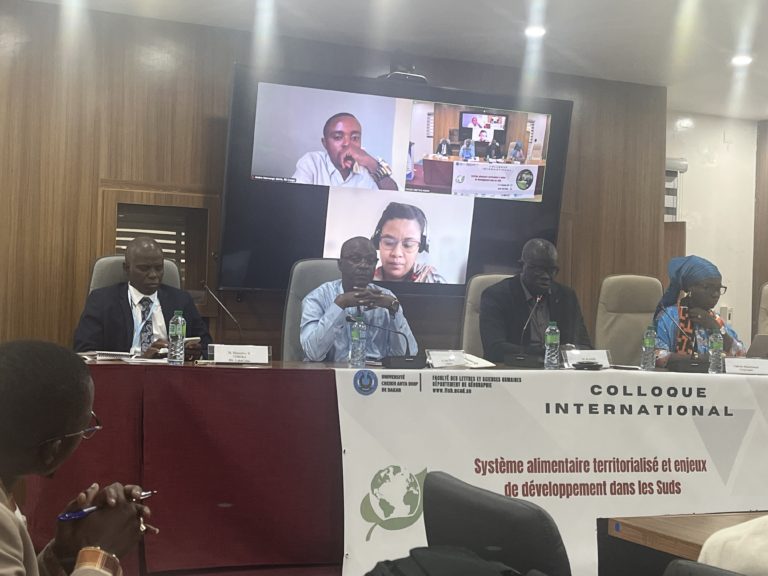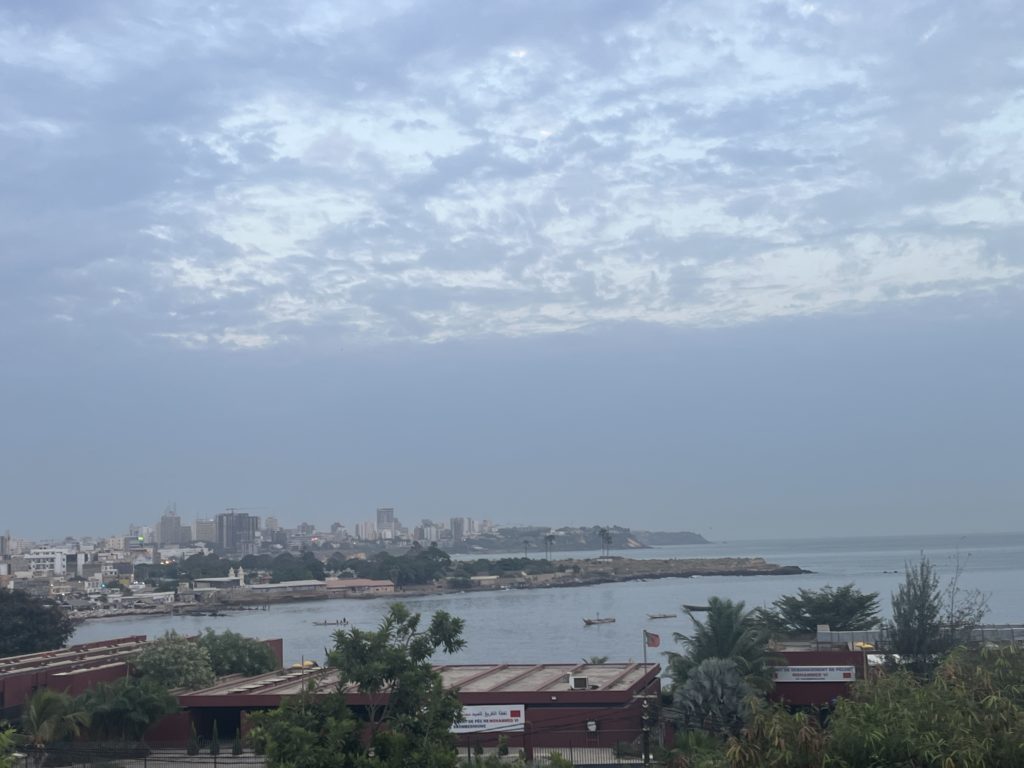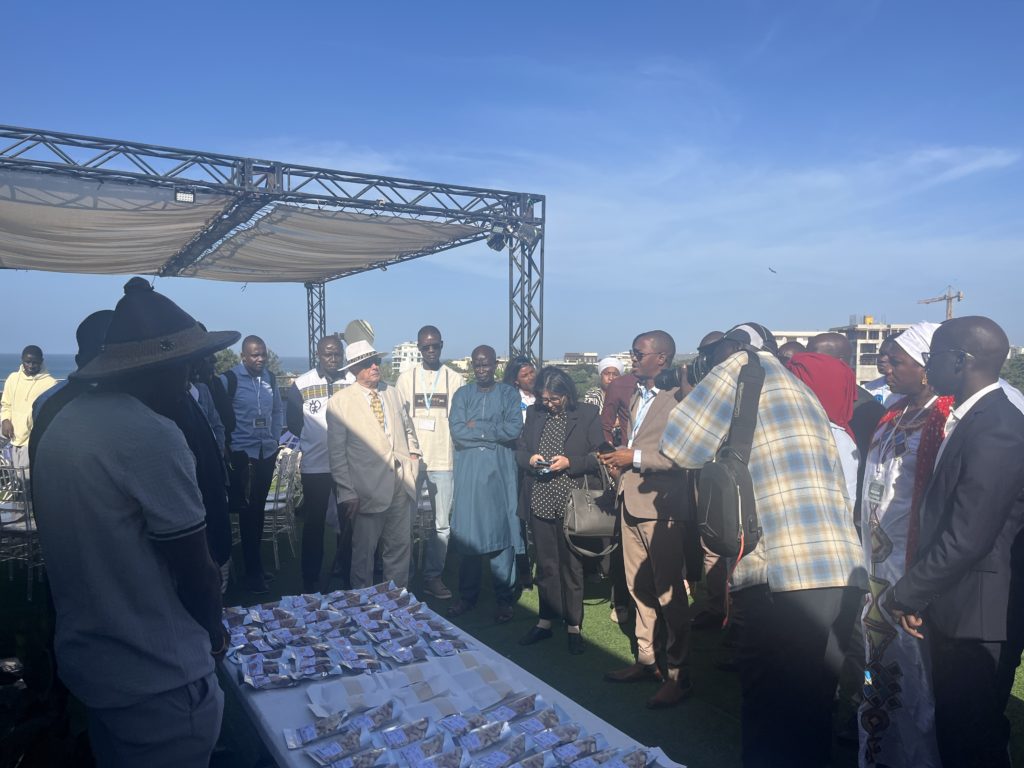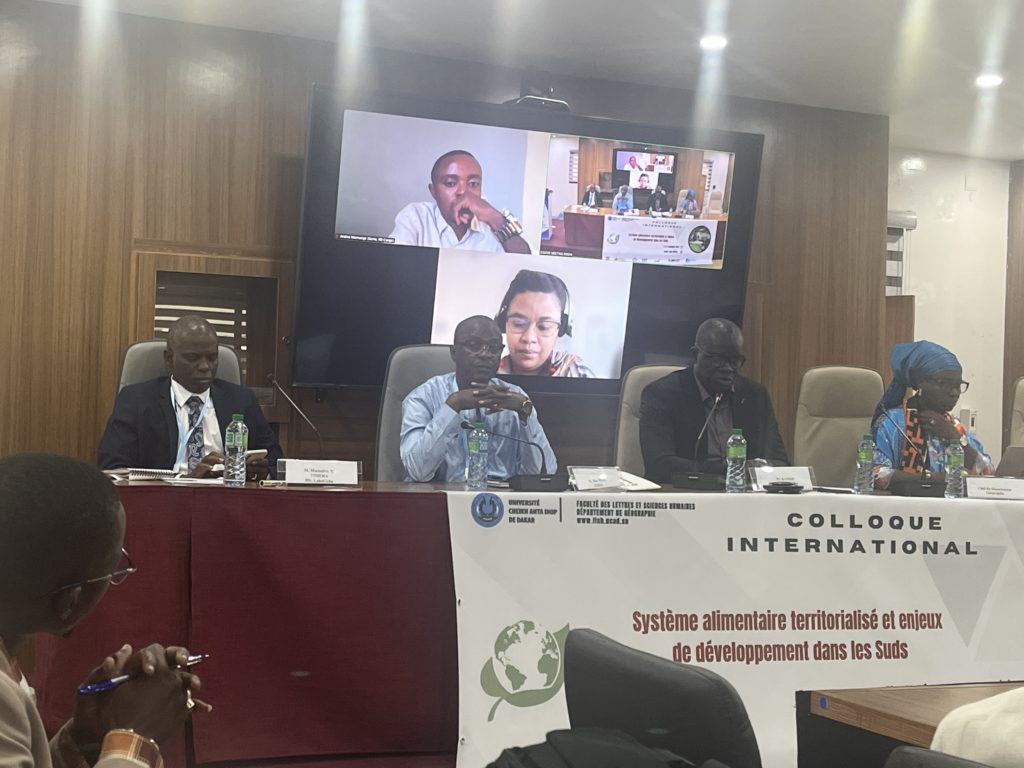Works by students and researchers in India
- Home
- Scientific production
- Works by students and researchers in India

Résumé
En Inde du Sud, les pratiques agricoles doivent s’adapter pour nourrir une population grandissante dans le contexte actuel du changement climatique mais aussi des difficultés post-Révolution verte. L’agriculture indienne est confrontée à la diminution des ressources en eau, à la dégradation de la qualité des sols et à la pollution de l’environnement par les intrants chimiques. Des difficultés sanitaires sont également causées par des habitudes alimentaires à l’origine de maladies non-transmissibles comme le diabète, favorisé par la surconsommation de riz. Pour répondre à ces enjeux, les ONG suivies du gouvernement indien mettent en avant les millets. Autrefois qualifiées de nourriture des pauvres ou de culture de la famine, consommées uniquement par les castes les plus basses, ces céréales traditionnelles font aujourd’hui l’objet d’une vaste revalorisation à l’échelle nationale voire mondiale par l’instauration de l’Année Internationale du Mil en 2023, portée par la FAO. Les millets sont reconnus pour leurs qualités nutritives et écologiques, dont la culture participe à atteindre les objectifs de développement durable définis par l’Agenda 2030. Dans les Jawadhu Hills, territoire rural du sud de l’Inde, les millets sont anciennement cultivés par des pratiques manuelles, au rythme des moussons. La récente revalorisation des millets, accompagnés par les actions de la DHAN Foundation, participe au développement économique de ces agriculteurs. Cependant, les revenus générés par les cultures de millets sont insuffisants et la plupart de ces producteurs doivent partir en migration pour assurer leur sécurité financière et celle de leur famille. Dans ce contexte, le regain d’intérêt pour le millet est-
il tout à la fois vertueux sur les plans environnemental et de santé humaine, et propice au recul de la pauvreté et au développement dans des territoires enclavés et marginaux ?
Abstract
In India, farming practices must adapt to feed a growing population in the current context of climate change and post-Green Revolution difficulties. Indian agriculture has to cope with dwindling water resources, deteriorating soil quality and environmental pollution from chemical inputs. Health problems are also caused by eating habits that lead to non-communicable diseases such as diabetes, which is encouraged by over-consumption of rice. In response to these challenges, NGOs working with the Indian government are promoting millets. Once described as the food of the poor or a crop of famine, eaten only by the lowest castes, these traditional cereals are now being given a major boost on a national and even global scale with the launch of the International Year of the Millets, supported by the FAO. Millets are renowned for their nutritional and ecological qualities, growing them helps to achieve the sustainable development goals set out in Agenda 2030.
In the Jawadhu Hills, a rural area of southern India, millets have traditionally been grown by hand, to the rhythm of the monsoons. The recent revaluation of millets, supported by the DHAN Foundation, should contribute to the economic development of these farmers. However, the income generated by millets is insufficient, and most of these farmers have to migrate to ensure their financial security and that of their families. In this context, is the renewed interest in millet both virtuous in environmental and human
health terms, and conducive to poverty reduction and development in landlocked and marginal territories?
Author : Prasanth A.
Abstract : This report examines the patterns of food supply and consumption in the rural and urban contexts of the Pondicherry bio-region, focusing on key dimensions such as food security, equity, sovereignty, and democracy. It investigates how socio-economic, cultural, and gender factors influence dietary habits and access to food in two contrasting environments: the rural village of Krishnankuppam and the urban area of Ariyankuppam.
The report highlights the rural community’s reliance on traditional crops and the urban area’s greater diversity in food choices, driven by different socio-economic dynamics. Government policies, such as the Green Revolution and the Public Distribution System, have significantly influenced food practices, leading to a marked shift from millet to rice-based diets. An analysis of meal organization indicates that rural households depend on locally available produce, while urban households enjoy a wider variety of vegetables and fruits. Urban innovations in meal preparation showcase a blending of traditional and modern culinary trends, whereas rural practices are often constrained by economic and time limitations.
Socioeconomic disparities are particularly evident in rural areas, where lower-income groups struggle with food security. This challenge is reflected in the consumption of millet, with lower-income households often unable to afford these nutritious food options. When examining fruit and vegetable consumption, significant differences emerge, with urban households incorporating a wider variety compared to their rural counterparts. The study highlights the impact of socioeconomic status and market availability on these trends. Urban households consume more fruits due to better access and awareness, while rural households prioritize seasonal and locally available options.
The report also explores non-vegetarian consumption, observing preferences for seafood, chicken, and mutton in both rural and urban contexts, with urban households displaying greater frequency and variety. While seafood is popular across both contexts, affordability and availability play crucial roles in shaping consumption patterns. Rural households tend to rely on locally sourced options, while urban households benefit from broader market accessibility. Food supply patterns vary significantly between rural and urban households, reflecting their distinct socio-economic and geographical contexts. Rural households frequently rely on self-cultivation and local exchanges for their food supply, heavily depending on seasonal availability.
However, reduced farm sizes and economic pressures are causing an increasing reliance on markets for staples like rice and other essentials. Urban households, in contrast, primarily depend on the market, sourcing food from local shops, supermarkets, and speciality stores. This market dependency allows urban households access to a broader variety of food items, but it also exposes them to fluctuations in market availability and prices.
Gender roles play a vital part in managing food supply, with rural women balancing farming and household responsibilities, while urban women navigate market systems to meet their families’ dietary needs. The report also examines food transformation within domestic kitchens, emphasizing women’s roles in managing household food systems under various constraints.
Rural women often balance traditional methods with resource limitations, while urban women explore innovative recipes that reflect modern dietary preferences. Health awareness and traditional culinary knowledge emerge as critical factors influencing food choices in both contexts, particularly among economically advantaged households. Health-related concerns associated with changing food habits in the region reveal significant differences between rural and urban contexts. The shift from traditional millet-based diets to rice centric consumption has contributed to rising incidences of lifestyle diseases such as diabetes and hypertension, particularly in rural areas where access to healthcare and awareness is limited. While rural households rely on locally sourced foods with minimal diversity, urban households incorporate a broader range of healthy foods such as greens, fruits, and millet, reflecting greater health awareness and market accessibility. However, urban diets also exhibit a higher intake of processed and convenience foods, increasing the risk of obesity and related conditions. Health-conscious behaviours, like the inclusion of millet and greens for their nutritional benefits, are more prominent in urban areas, often driven by education and income levels. In contrast, rural households face constraints such as time, resources, and lack of awareness, limiting their ability to integrate healthier dietary options consistently. These disparities highlight the need for targeted nutritional education and access to affordable, healthy food options across both contexts.
In conclusion, the study provides a comprehensive understanding of the evolving food systems in the Pondicherry bio-region, identifying factors that differentiate rural and urban food practices, including socio-economic influences, cultural preferences, and generational shifts. The report emphasizes the necessity for targeted policies to address food equity and sustainability, suggesting that promoting local agricultural systems and empowering communities through food sovereignty and democracy can help bridge existing gaps. It advocates for a balanced approach that integrates nutritional education, market accessibility, and cultural preservation to cultivate a resilient and inclusive food system for the Pondicherry bio-region.
Author : Dr. K. Padmavathy
Abstract : The significance of this project lies in identifying the key groups, actors, and sectors involved in organic farming. Given the increasing global demand and consumption rates of organic food products, this study is necessary. The objective of this project is to focus on specific farmer groups and investigate the factors that influence their preference for, or discontinuation of, organic farming practices over an extended period. Furthermore, the project aims to examine the various sectors involved in the entire farming process, from cultivation to consumer demand and perspective. This comprehensive approach will aid in identifying the main obstacles faced by the farming community at all stages, including production, processing, and marketing. By doing so, feasible solutions can be sought for the identified crises and problems. This research primarily revolves around the behavior and attitudes of general farmers towards organic farming in Puducherry’s food industry. The aim is to compile and map a comprehensive list of the active sectors and actors involved in the organic agricultural process. The dynamic nature of farmers’ preferences and consumer behavior necessitated a research study to investigate changes in organic farming techniques, challenges encountered during farming, and perceptions related to organic food consumption and demand among consumers. The findings of this study will assist in identifying the actors and sectors engaged in agricultural activities, understanding social networking among farmers, identifying hindrances faced by farmers in terms of production, processing, and marketing, and ultimately developing.
A Study on Food Justice and Democracy in Pondicherry Bioregion
A report submitted by Dr. M. Roja Lakshmi
Under the supervision of Prof. Helen & Dr. Ritu Tyagi
Auteurs : Ce rapport a été rédigé par Baptiste MARIE-CATHERINE et Chloé RIGAL, chargés de mission de l’ONG ASIE, à l’issue de leur mission de terrain dans le Tamil Nadu de mars 2023.
Autrice : Maëva RZEGOCZAN
Résumé : En Inde, les pratiques agricoles doivent s’adapter pour nourrir une population grandissante dans le contexte actuel du changement climatique mais aussi des difficultés post-Révolution verte. L’agriculture indienne est confrontée à la diminution des ressources en eau, à la dégradation de la qualité des sols et à la pollution de l’environnement par les intrants chimiques. Des difficultés sanitaires sont également causées par des habitudes alimentaires à l’origine de maladies non-transmissibles comme le diabète, favorisé par la surconsommation de riz. Pour répondre à ces enjeux, les ONG suivies du gouvernement indien mettent en avant les millets. Autrefois qualifiées de nourriture des pauvres ou de culture de la famine, consommées uniquement par les castes les plus basses, ces céréales traditionnelles font aujourd’hui l’objet d’une vaste revalorisation à l’échelle nationale voire mondiale par l’instauration de l’Année Internationale du Mil, portée par la FAO. Les millets sont reconnus pour leurs qualités nutritives et écologiques, dont la culture participe à atteindre les objectifs de développement durable définis par l’Agenda 2030. Dans les Jawadhu Hills, territoire rural du sud de l’Inde, les millets sont anciennement cultivés par des pratiques manuelles, au rythme des moussons. La récente revalorisation des millets, accompagnés par les actions de la DHAN Foundation, devrait participer au développement économique de ces agriculteurs. Cependant, les revenus générés par les cultures de millets sont insuffisants et la plupart de ces producteurs doivent partir en migration pour assurer leur sécurité financière et celle de leur famille.
Présentation du travail de Maëva RZEGOCZAN : https://patamil.centraider.org/wp-content/uploads/2023/10/2023-PPT-SOUTENANCE-Mae╠eva-RZEGOCZAN.pdf
Travail précédant de Maëva RZEGOCZAN en master I : https://patamil.centraider.org/wp-content/uploads/2023/08/DELAPA1.pdf
Autrice : Noémie ATEK
Résumé : Alors que la majorité des terres agricoles du bloc Jawadhu Hills, territoire rural de moyennes montagnes situé dans le district de Tiruvannāmalai, est consacrée à la culture pluviale de millets, la dépendance au régime de précipitations rend les agriculteurs vulnérables à la variabilité naturelle de la mousson. Dans un système agricole et alimentaire dominé par une agriculture de subsistance, l’emballement climatique mondial risque d’augmenter cette variabilité spatiotemporelle et donc menace la sécurité alimentaire de la population. Les études sur l’évolution des précipitations à l’échelle du district et du bloc ne permettent pas d’affirmer l’existence du changement climatique dans les Jawadhu Hills. Cependant l’enquête auprès des agriculteurs caractérise les perturbations climatiques qui affectent leurs activités agricoles. Alors, pour améliorer leurs conditions de vie, les agriculteurs et les acteurs locaux, collaborent dans l’élaboration de stratégies d’anticipation. Le changement de pratiques agricoles, l’installation de stone-bund ou encore la rénovation d’étangs collectifs semblent être des leviers d’actions d’atténuation et d’adaptation à la variabilité climatique, qu’elle soit d’origine naturelle ou anthropique.
Présentation du travail de Noémie ATEK : https://patamil.centraider.org/wp-content/uploads/2023/10/2023-PPT-SOUTENANCE-Noe╠umie-ATEK.pdf
Travail de master I de Noémie ATEK : https://patamil.centraider.org/wp-content/uploads/2023/08/En-cours-Ladaptation-et-lanticipation-du-changement-climatique-dans-les-Jawadhu-Hills-_-Noemie-ATEK.pdf
Dans quelle mesure la portée idéologique et systémique des politiques publiques en faveur de l’agriculture intensive peut-elle compromettre la réussite d’une transition vers l’agroécologie, en Inde ?
Présentation de Marie-France UMUTESI
Sous la direction de Frédéric LANDY
Composition du jury :
M. Frédéric LANDY, Professeur de géographie, Université Paris Nanterre.
Mme. Laura VERDELLI, Maître de conférences en aménagement de l’espace et urbanisme,
Université de Tours.
Author : Dr. Prasanth A.
Summary : In the PATAMIL project, my focus is on studying the food supply and consumption behavior of rural and urban households in the Pondicherry bio-region. Specifically, my research is being conducted in Krishnankuppam village in the Cuddalore district and Ariyankuppam block in Pondicherry. To achieve this, I have prepared an interview guide (checklist) to facilitate in-depth, qualitative interviews with selected rural and urban households representing different social and economic groups in the study areas. The interviews will be recorded and transcribed into text, and the resulting data will be analyzed to prepare a final report.
Understanding the differences in food supply and consumption behaviour among different groups of rural and urban households depending on their social and economic class will be the main output of this research. Additionally, I aim to gain insight into how women organize their work around food and other household tasks, as well as explore the relationship between food and health in rural and urban households. Through this research, I intend to produce a report and research publication that will contribute to a deeper understanding of food supply systems and consumption patterns in the region.



